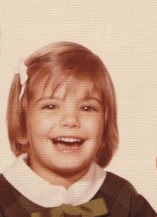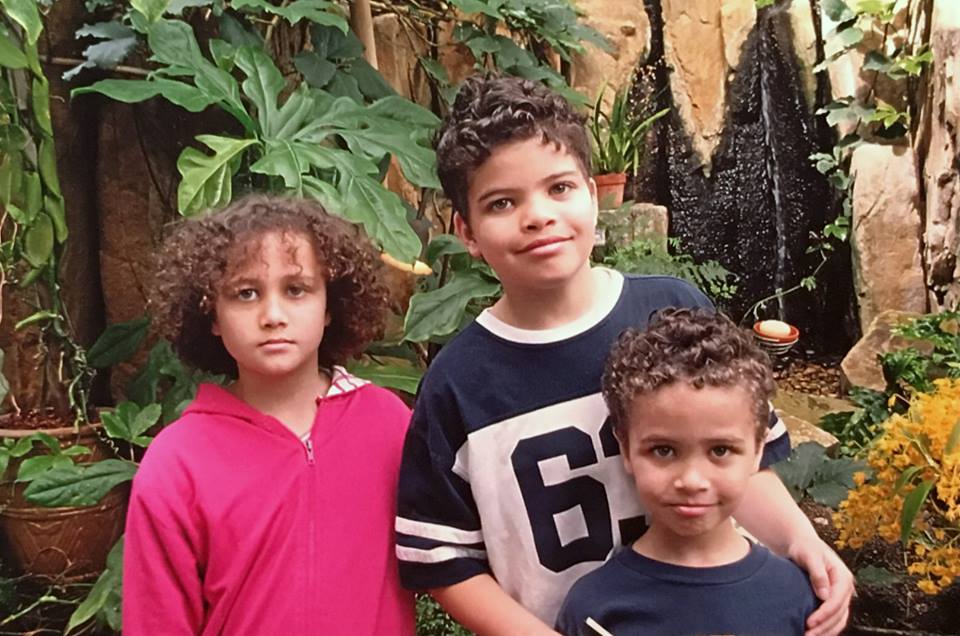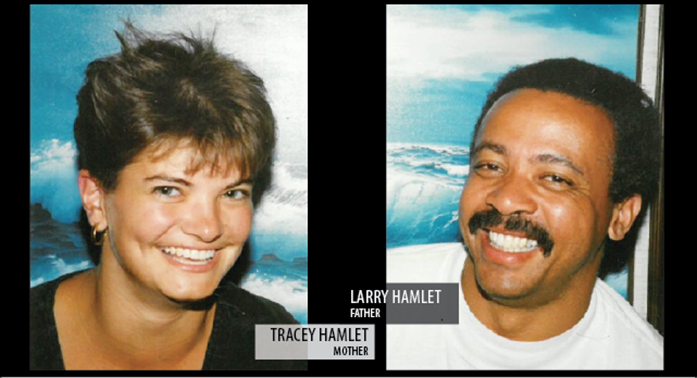By Isaac Hamlet
Since 2000, the U.S. Census has allowed people to identify themselves under numerous ethnicities. When this practice was instituted, 6.8 million Americans identified as being of mixed race; in 2010, the number reached 9 million. That was a 32 percent increase, making it one of the fastest growing racial categories in the U.S.
* * *
“I was probably 5 years old,” my dad said. “Probably started going out to the cotton field with my grandmother, she would say, ‘Pick some,’ and I’d just put it in her cotton sack.”
My dad, Larry Hamlet, was born on March 22, 1954, in Itta Bena, Mississippi, and raised by grandparents Annie and LeRoy Hamlet. His parents separated when he was about a year old and shortly after, his mother, Joyce, died in childbirth with what would have been her third son.
 He was born “Larry Smith” but took his grandparents’ last name because “the world doesn’t need another Smith family in it.”
He was born “Larry Smith” but took his grandparents’ last name because “the world doesn’t need another Smith family in it.”
In 1960, around the time he was 5, mixed-race marriages accounted for roughly 0.04 percent of marriages, according to the U.S. Census.
During his first 15 years of life, he lived on Gold Dust cotton plantation during Jim Crow with his grandparents, brother, and cousins.
“As we got older, we were required to pick 200 pounds of cotton a day,” he said. “That was per person. I had read somewhere in a book that slaves had to pick 200 pounds of cotton a day.”
He wasn’t wrong. According to The Price of Precocity, a 1992 publication by Carville Earle, male slaves were typically expected to pick 200 pounds of cotton per diem.
The difference of course, was my father was paid.
“[I’m not sure how much we were paid] off-hand. Probably wasn’t all that much; I’m gonna guess it was about 3 cents a pound,” he said. “It wasn’t all that much.”
In the 1970s, cotton was valued at about 25 cents per pound.
To be clear, that is the price it sold for; the payment for picking it would have been well below that. Assuming his pay was 5 cents per pound, inflation would make that 31 cents per pound. That is $62 relative to today for 12 hours picking cotton under the Mississippi summer Sun.
During the school year, he’d go to class every day. Then, when he got back home, if it was cotton season, he headed into the fields with his brother and cousins to pick as much as they could before sundown.
“I probably left Itta Bena that summer [I started high school],” he said. “I probably didn’t even stay there the year; it was probably in the middle of the semester or something.
“Once my grandfather told me I had to call the white kid I grew up with ‘Mister,’ I realized it was time to go. I ran away from home when I was probably 15 or 16 and went to Kansas City, Missouri.”
Just around the time my dad was running away from home, my mother, Tracey Hamlet — Tracey Bell at that time — was living in Detroit, walking to and from kindergarten.
That year, interracial couples made up 0.7 percent of marriages.
“I don’t think I was really in tune with [racial issues] at the time,” she said. “I think the first time I became aware of [racial tension] was when we moved [from Minneapolis] to Detroit, and the riots had happened before we moved, so the town was pretty vandalized. I remember being little, and looking out the windows, and saying to my mom, ‘Why is this such a mess?’ ”
My mother grew up with her parents, her older sister, and her two younger brothers. Her mother, Jerylin Bell, stayed home to take care of her kids while Dennis Bell fought unemployment or relocation to provide for his family.
Hear segments from an interview with the interviewer’s Grandparents: Jerilyn and Denise Bell
After 18 years at home, my mother — like my father — was the first in her immediate family to go to college. She attended Michigan State University and graduated in 1987 with a bachelor’s degree in psychology.
“I met [Larry] in my late-20s,” she said. “I was out with a friend in Eastown. I met him and a guy named Kevin, and we played darts. It probably would have been ’92 or ’91. I think about a week later we went on a lunch date.”
They were married in 1994, one of the 2.2 percent interracial marriages that year.
My mother gave birth to me a year later, sister Rachael in 1997, and brother Eli in March 2000. Sometime around 2004, they divorced.
* * *
Today, my siblings and I, and thousands of others, are part of roughly 7 percent of Americans who are multiracial, estimated by the Pew Research Center in 2015.
It is a stereotype that children with parents from different races are caught between two different worlds. While there might be an element of truth in that for some, it’s a broad generalization.
This article is a record of a few experiences — not complete or universal by any means. The experiences here are those of people I knew, a very small pool with a clear sample bias. It’s not indicative of every mixed person on the planet. Just as with whites, or African Americans, or Latinx, or Arabs, or Native Americans, people who are multiracial have different stories.
“[There are] little micro things,” Rachael, 19, said. “Little questions that happen often when people don’t know you. Like ‘What are you?’ Because you don’t look like anything in particular.”
Not looking like anything in particular sometimes extends to not fully resembling your own parents.
Here is an instance my sister and I remember: I would have been around seven, and we were coming out of Center Point Mall with my brother and father. I’m not sure what store we’d gone to or what we might have been talking about, but while my dad was unlocking the Honda, a woman getting out of her car looked over at us and asked my dad, “Are those your kids?”
I can’t say for certain what her thoughts or intentions were, but from the way she looked at us — clearly concerned — and the way she made sure she was partially in her car, it seemed like she thought our dad was trying to abduct us.
“I don’t remember it very clearly, but I do remember that it happened,” Rachael said. “I didn’t realize that at the time. I thought, ‘That lady’s stupid.’ I didn’t realize [it was probably racial] until it was a couple years later.”
Though this instance stuck with me and her, my dad didn’t remember it when I brought it up to him a few months ago.
“I don’t think I filtered it out; I’m just used to those things happening,” he said. “I know people can be ignorant; I know people say the wrong things.”
My father had experienced years outpacing our lives living in Jim Crow’s Mississippi. To us, moments like this still left an impression, and we have been fortunate enough to not have to call our white friends “Mister” or cross to the other side of the street when a white person walks down the sidewalk.
Our experiences have been different from his, both because we live in a different time and because we are racially different from him — from both our parents.

For example, there’s a fairly inconsequential epiphany I had in high school. Reading a book called The Red Pyramid, I had a sudden realization that science fiction and fantasy books — the two genres I read most — could have protagonists that looked like me.
Carter Kane and sister Sadie were mixed race, but not because they were in a period piece in which being biracial would add to the drama. They had a black father and a white mother, and that was it. Their family structure was brought up occasionally, but it wasn’t a big deal or even a plot point. They just were.
Somehow — somehow — it had never occurred to me that I could read about a character who looked like me and was content with that. Maybe this makes me dumb, but at the time, I’d assumed mixed kids like me were limited to characters in an imagined sequel to Guess Who’s Coming to Dinner or had our backgrounds only act as plot points like in Jip, His Story.
Carter Kane and his sister were the characters I hadn’t realized I’d been waiting to read about.
* * *
Two years ago, my sister started going to Ferris State University in Big Rapids, Michigan. One of her longtime friends decided to follow her to the school and fell into a friend group that my sister would occasionally be exposed to.
“They were all white kids, and I didn’t think anything of that,” Rachael said. “I was anticipating the questions of ‘What are you?’ because that’s common. And I said ‘OK, I’m white, and I’m black.’ And one of the guys was like, ‘Oh, you’re a quarter-black?’ and I’m like ‘No, I’m half-and-half.’ And he said, ‘Are you sure?’ ”
“Yeah, pretty sure dude.”
She didn’t like either of the two guys who made these comments, though she didn’t cut them out completely.
But the more she was around them, the more she found herself hearing such comments as “I’m afraid to walk around here at night; there’s just so many black people.”
There was an event in which one of the guys had been talking to a black football player in one of the dorms. When the player left, the guy said “See? That one can talk.”
Another time, one of the guys introduced her to someone else by saying, “She’s a n*****, but she’s a light-skinned n*****.”
“What I see it as is, they really didn’t view me as anything,” she said. “I wasn’t one of them, they knew I was different, but they obviously didn’t see me as being black because of my appearance.
“If I had darker skin, or features that they associated with a black person, they would not have said that around me. They didn’t say that when anyone else who appeared black was in the room. It was like I was safe. I was light enough that I wasn’t threatening to them.”
Listen to interviews with Stacey Moulty and Miriam Hurula. You can also hear snippets of interviews with (in order) Jey Moriconi, Jonathan Becerril, Eli Hamlet, and Rachael Hamlet. Eli Hamlet also reads two segments from The Red Pyramid, by Rick Riordan.
This is an example of a weird sort of erasure that can happen when you’re biracial. People see you, realize you’re different, and rather than embrace the difference, they mentally scrape away the parts that are inconvenient for them or don’t match up with their definitions.
“I know whenever race does come up, I’m generally not really considered black,” Eli, 16, said. “Whenever I’ve asked my friends, they’re like ‘You’re not really black.’ Just because I’m biracial, does that not qualify me to be black still?”
I remember a similar occurrence for me in eighth grade when one of my white friends asked me, “Is it OK if I think of you as white?”
I didn’t really understand his question at the time. It was polite of him to ask, I guess.
To me, it just seemed the same as people asking if they can pretend I have one eye instead of two. Even if I don’t necessarily look black, I still look like a minority member.
“I think [being biracial] is a different experience,” Eli said. “Just the other day, a friend was asked to do an interview for Black History Month; she has really light skin, and she didn’t want to do it because she thought people might find it offensive because she didn’t look black.”
* * *
While I and my siblings look ambiguously non-white, there are still those who tend to look more white than not. Take Jonathan Becerril, my best friend since first grade.
His mother and father, Linda and Juan Becerril, met while she was engaged in missionary work in Central America. They started dating and eventually married, giving birth to Jon and his younger sister, Bri.
 Jon Becerril, 21, graduated from high school the same year as me, and he has attended Carnegie Mellon University for the past four years.
Jon Becerril, 21, graduated from high school the same year as me, and he has attended Carnegie Mellon University for the past four years.
“No one [assumes I’m Mexican],” he said. “Not unless I say something. Even then sometimes, when I tell someone my dad is Mexican, they say, ‘Sure, Jon.’ ”
Bri Becerril shares a more similar skin tone as their father’s, and her brother has a pigmentation closer to his mother’s. For the most part, he doesn’t “look” Mexican. Furthermore, living in America has caused him to grow up largely apart from his father’s side of the family. And even though both of his parents speak Spanish, they didn’t speak it enough around the house for him to pick it up.
“Honestly, I completely believe this, the only reason I got into Carnegie-Melon was because I checked the little box that said Latino,” Jon Becerril said. “That kind of weighs on me; did I take this spot from someone who deserved it more and isn’t living an outward-appearance lie?”
By “outward lie” he is referring to his not likely to be discriminated against because of his appearance.
“Half of me doesn’t really exist, I suppose,” he said. “It’s only ever really the white part that only gets attention or anything. The Hispanic part of me, if it exists, doesn’t.”
* * *
In the case of Jey Moriconi, the Latino half of her was buried. Both of her parents tried to ignore that half of her ancestry.
After the age of 5, she didn’t see her father often. Her mother avoided talking about him and by extent that side of her family, and Moriconi’s father, was less than eager to embrace his own roots as well.
“[My father] had disdain for his own culture,” she said. “He thought speaking Spanish was dirty. He moved from California to Michigan to leave [his culture] behind or something like that. That combined with my mom not wanting to talk about it leaves me very displaced from a culture I would have otherwise been a part of.”
In spite of the active attempt to keep this part of her heritage unmentioned, Moriconi became invested. She started looking into that side of her family, trying to familiarize herself with the culture.
“It would sort of be pretending like half of me didn’t exist,” she said. “[It would be] like half of the people I’m related to, I’m not … It would be like denying the memories of my father. It would be like saying that didn’t matter to me.”
[Editor’s note: Moriconi is currently employed at The Daily Iowan.]
* * *
That’s the fear multiracial people face — or at least the fear I feel: a loss of identity.
No, my father’s struggles are not mine. They couldn’t be. But to deny that any part of me were black would feel like denying him and the struggles he faced.
While I was speaking with him recently, my dad pointed out that when immigrants came to Ellis Island — from such places as Poland and Czechoslovakia — they’d be given new names that were “easier” to pronounce. He talked about the “great American melting pot,” not in the delicious way I have heard it depicted before but as a great sterilizer — converting nuance into “whiteness.”
The “generic brand.”
I cannot speak for all, or anyone of mixed race other than me, but I also don’t want to dismiss the history of either of my parents and the privileges they’ve afforded me despite their own struggles.
I don’t want to deny that my mother walked to school every day as a child so that when she was a woman, she could work dozens of hours every week to put food on the table.
I don’t want to forget that my father woke up at sunrise and picked cotton as a boy before he grew into a man who stayed home to raise his children.



